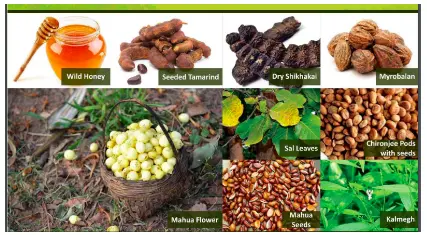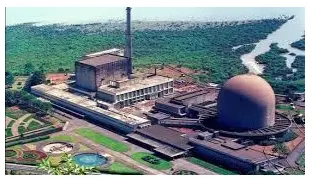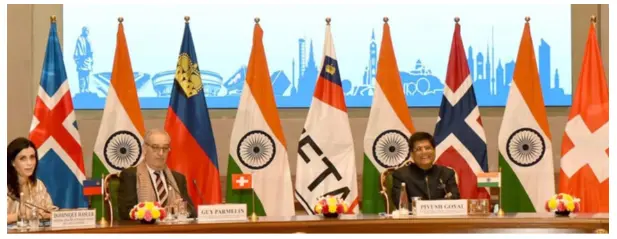Thursday, 30th May 2024
Fire Safety Regulations in India
In News: The recent fire tragedies in Rajkot and Delhi, claiming at least 40 lives within 24 hours, underscore the urgent need for stricter enforcement of fire safety regulations, especially in vulnerable buildings.

Fire Safety Regulations in India: An Overview
National Building Code (NBC)
- Established in 1970, the NBC serves as India's primary standard for fire safety in buildings, with its latest update in 2016.
- It offers comprehensive guidelines covering general construction, maintenance, and fire safety measures.
Incorporation into Local Building Bylaws
- State governments are mandated to integrate NBC recommendations into local building bylaws, as fire services fall under state jurisdiction.
- The 'Model Building Bye Laws 2016' assists states and urban areas in formulating building regulations.
Role of National Disaster Management Authority (NDMA)
- NDMA provides additional guidelines for fire safety in various settings such as homes, schools, and hospitals.
Key Provisions of the National Building Code
- Defines fire zones to prevent hazardous structures from coexisting with residential and institutional buildings.
- Categorizes buildings into occupancy groups and emphasizes the use of non-combustible materials.
- Specifies requirements for internal walls, height, floor area ratio, open spaces, and fire-resistant openings.
- Stresses the importance of flame-retardant electrical installations and emergency power supply systems.
- Recommends technologies for fire protection, including automatic detection systems, sprinklers, fire barriers, and escape routes.
Challenges in Fire Safety Compliance
- Lack of uniform safety legislation and enforcement of NBC guidelines.
- Non-compliance with mandatory certifications and underutilization of fire safety audits.
- Shortage of staff for regular checks and enforcement exacerbates safety issues.
- Tragic incidents like the Rajkot game zone and Delhi hospital fires highlight the need for community resilience and adherence to safety norms as emphasized by the National Institute of Disaster Management (NIDM).
Source: TH
Revamping India's Informal Labor Market
In News: India's labour market is distinguished by an extensive informal sector, encompassing more than 400 million workers who operate beyond the formal employment framework.

Current State of the Labour Market
- Global Informal Economy
- More than 60% of the global workforce operates in the informal economy, along with 80% of enterprises worldwide.
- Over 2 billion workers worldwide are engaged in informal employment, contributing significantly to global GDP.
- In India, nearly 85% of the workforce is part of the informal sector, generating over half of the country's GDP.
- Challenges Posed by the Informal Labour Market
- Precarious Employment: Agricultural laborers and street vendors face seasonal unemployment and low wages, contributing to income inequality.
- Sustainable Livelihoods: Providing equitable opportunities and sustainable livelihoods for informal workers remains a challenge.
- Social Vulnerability: Limited access to social security, healthcare, and basic rights due to low incomes and large family sizes.
- Occupational Hazards: Informal workers, such as waste pickers, face health risks, while child labor remains prevalent.
- Institutional Challenges: Lack of legal protection and vulnerability to harassment by authorities are significant issues.
Government Schemes for Informal Labourers
- Includes schemes like Pradhan Mantri Jeevan Jyoti Bima Yojana, Pradhan Mantri Shram Yogi Maan-dhan, and eShram Portal, among others.
- Additional schemes cater to unorganized workers, such as Mahatma Gandhi National Rural Employment Guarantee Act and PM SVANidhi.
Implementation of Labour Codes
- The government aims to simplify labor laws through four consolidated codes, covering wages, industrial relations, social security, and occupational safety.
Way Forward
- Universal Coverage: Leverage platforms like the eShram portal to enroll all informal workers into social security schemes.
- Simplifying Registration Processes: Simplify registration for informal businesses to integrate them into the formal economy.
- Tailored Schemes: Design specific social security programs for diverse worker groups.
- Skill Development and Formalization: Equip informal workers with relevant skills and incentives to transition into the formal sector.
- Grievance Redressal Mechanism: Establish accessible mechanisms to address grievances periodically.
|
UPSC Previous Year Questions Prelims (2016) Q. Pradhan Mantri MUDRA Yojana is aimed at (a) bringing the small entrepreneurs into formal financial system Ans: (a) Prelims (2013) Q. Disguised unemployment generally means (a) large number of people remain unemployed Ans: (c) Mains (2023) Q. Most of the unemployment in India is structural in nature. Examine the methodology adopted to compute unemployment in the country and suggest improvements. |
Source: TH
Competition in Digital Markets
In News: During the 15th annual day celebrations of the Competition Commission of India (CCI), the Chairperson highlighted the trend of digital markets towards market concentration, resulting in monopolistic tendencies.

Understanding Digital Markets
- Definition
- Digital markets, also known as online markets, refer to commercial spaces where businesses and consumers interact through digital platforms.
- Examples
- E-commerce Marketplaces: Platforms like Amazon and eBay facilitate direct sales from businesses to consumers.
- Digital Advertising: Companies such as Google Ads and Facebook Ads display online advertisements across websites and social media.
- Social Media Marketing: Businesses utilize platforms like Facebook, Instagram, and Twitter for brand promotion and customer engagement.
- Search Engine Optimization (SEO): Techniques employed to enhance a website's visibility on search engine results pages (SERPs).
Challenges in Digital Market Competition
- Market Dominance and Anti-Competitive Practices
- Powerful players can monopolize markets, limiting innovation and consumer choice.
- Examples include self-preferencing, tying and bundling, and exclusive deals.
- Network Effects and Winner-Take-All Dynamics
- Platforms gain value with more users, making it challenging for new entrants to compete.
- High switching costs and reduced innovation are consequences of winner-take-all dynamics.
- Data Advantage and Privacy Concerns
- Companies gather extensive user data, raising concerns about privacy violations and an uneven playing field.
- New entrants struggle to compete without access to data leveraged by established players.
- Regulatory Challenges
- Existing regulations may not effectively address complex digital ecosystems.
- Antitrust issues and determining dominant firms pose significant challenges for regulators.
Solutions to Monitor Digital Market Competition
- Proactive Measures
- Designation of Systemically Important Digital Intermediaries (SIDIs) to regulate dominant players.
- Prohibition of anti-competitive practices like self-preferencing and exclusive dealing.
- Mandating data sharing and interoperability to promote competition and user choice.
- Strengthening the Competition Commission of India (CCI)
- Providing the CCI with enhanced resources and expertise to monitor digital markets effectively.
- Promoting innovation through regulatory sandboxes for startups and transparency in data practices.
Conclusion
Digital markets offer opportunities for growth but also present challenges. Proactive measures and regulatory frameworks are essential to foster competition, innovation, and data privacy in the evolving digital landscape.
|
UPSC Previous Year Questions Prelims (2021) Q. ‘Right to Privacy’ is protected under which Article of the Constitution of India? (a) Article 15 (b) Article 19 (c) Article 21 (d) Article 29 Ans: (c) Prelims (2018) Q2. Right to Privacy is protected as an intrinsic part of Right to Life and Personal Liberty. Which of the following in the Constitution of India correctly and appropriately imply the above statement? (a) Article 14 and the provisions under the 42nd Amendment to the Constitution. (b) Article 17 and the Directive Principles of State Policy in Part IV. (c) Article 21 and the freedoms guaranteed in Part III. (d) Article 24 and the provisions under the 44th Amendment to the Constitution. Ans: (c) Mains (2017) Q. Examine the scope of Fundamental Rights in the light of the latest judgement of the Supreme Court on Right to Privacy. |
Source: IE
India’s Service Sector
In News: In May 2024, India experienced vigorous business activity, primarily led by the dominant services sector. According to the HSBC's flash India Composite Purchasing Managers' Index (PMI) compiled by S&P Global, there was record export growth and the highest rate of job addition in almost 18 years.
Understanding the Service Sector
- Overview
- The service sector encompasses industries offering intangible services like finance, banking, healthcare, education, and IT.
- India's Service Sector Contribution
- Contributes over 50% to India's GDP.
- Despite the pandemic's impact, it remains a vital economic contributor.
- India is a prominent player in software services exports and attracts significant FDI inflows.
- Key Highlights from India's Flash Composite PMI
- Composite PMI rose to 61.7 in May 2024, indicating robust economic activity.
- Significant job expansion, especially in the private sector.
- Record growth in new export orders for both manufacturing and services sectors.
Challenges Faced by India's Services Industry
- Inadequate physical and digital infrastructure.
- Skills gap and mismatch between education and industry needs.
- Rigid labour laws and taxation issues.
- Intense domestic and international competition.
- Limited access to finance for service providers.
Opportunities for India in the Service Sector
- IT-BPO/Fintech, healthcare, tourism, logistics, transportation, education, and professional services sectors offer growth prospects.
- Government support and a large pool of skilled professionals drive these opportunities.
Future Strategies and Recommendations
- Implement portable social security systems for gig workers.
- Promote entrepreneurship, innovation, and early-stage funding.
- Targeted skill development programs for marginalized groups.
- Reskill the workforce for AI and automation.
- Encourage remote work and formal sector transition for informal workers.
Adopting best practices from global models like Peru's National Strategy can facilitate inclusive growth and workforce empowerment.
|
UPSC Previous Year Questions Prelims (2008) Q. What does S & P 500 relate to? (a) Supercomputer (b) A new technique in e-business (c) A new technique in bridge building (d) An index of stocks of large companies Ans: (d) Prelims (2015) Q. In the ‘Index of Eight Core Industries’, which one of the following is given the highest weight? (a) Coal production (b) Electricity generation (c) Fertilizer production (d) Steel production Ans: (b) Mains (2017) Q1. Industrial growth rate has lagged behind in the overall growth of Gross-Domestic-Product (GDP) in the post-reform period” Give reasons. How far the recent changes in Industrial Policy are capable of increasing the industrial growth rate? Mains (2014) Q2. Normally countries shift from agriculture to industry and then later to services, but India shifted directly from agriculture to services. What are the reasons for the huge growth of services vis-a-vis the industry in the country? Can India become a developed country without a strong industrial base? |
Source: ET
Minor Forest Produce
In News: Tribal communities in Odisha are facing difficulties in obtaining approvals from the forest department to sell Kendu leaf, which is classified as minor forest produce.

Understanding Minor Forest Produce and Kendu Leaf
- Definition of Minor Forest Produce
- The Scheduled Tribe and Other Traditional Forest Dwellers (Recognition of Forest Rights) Act, 2006, also known as the Forest Rights Act (FRA), defines 'minor forest produce' as any non-timber forest product of plant origin.
- This includes items such as bamboo, brushwood, stumps, cane, tussar, cocoons, honey, wax, lac, kendu leaves, medicinal plants, herbs, roots, tubers, and similar products.
- In essence, it encompasses all forest products excluding timber.
- Kendu Leaf
- Kendu Leaf, often referred to as the green gold of Odisha, is a nationalized product similar to bamboo and sal seed.
- It is one of the most important non-wood forest products in Odisha.
- Known as tendu leaf in some parts of India, it is primarily used to roll tobacco into bidis (local cigarettes).
- Production of Kendu Leaf
- Kendu leaves are predominantly produced in the states of Madhya Pradesh, Chhattisgarh, Odisha, Andhra Pradesh, Jharkhand, Gujarat, and Maharashtra.
- Odisha ranks as the third-largest producer of kendu leaves in India, following Madhya Pradesh and Chhattisgarh.
Source: DTE
Magellan Mission to Venus
In News: Scientists examining the historical data from NASA's Magellan mission have reported the discovery of fresh lava flows on Venus, indicating volcanic activity on the planet during the period from 1990 to 1992.

Overview of the Magellan Mission to Venus
- NASA launched the Magellan Mission on May 4, 1989, as a deep space exploration endeavor aimed at studying the planet Venus.
- The spacecraft was launched aboard the space shuttle Atlantis from Cape Canaveral, marking the first interplanetary mission launched from the Space Shuttle.
- Named after the renowned Portuguese explorer Ferdinand Magellan, who was the first to circumnavigate the Earth, the mission aimed to map the surface of Venus comprehensively.
- Utilizing the Inertial Upper Stage booster, Magellan embarked on its journey to Venus, equipped with radar imaging technology due to the planet's thick atmosphere hindering visual observation.
- Upon its arrival at Venus in 1990, the Magellan spacecraft initiated the task of mapping the planet's surface through radar imaging, achieving the first-ever global map of Venus and its gravity field.
- The mission yielded intriguing discoveries, revealing a relatively youthful planetary surface thought to be shaped by extensive lava flows from planet-wide volcanic activities.
- In October 1994, the Magellan spacecraft concluded its operations by deliberately descending into Venus's atmosphere, marking the first intentional crash of an operational planetary spacecraft.
Source: IE
Bhabha Atomic Research Centre (BARC)
In News: State-run Bharat Heavy Electricals Ltd. (BHEL) recently signed a Technology Transfer Agreement (TTA) with the Bhabha Atomic Research Centre (BARC) to acquire technology for a 50-kW alkaline electrolyser system for hydrogen production.

Overview of Bhabha Atomic Research Centre (BARC)
- About BARC
- Premier Nuclear Research Facility: Bhabha Atomic Research Centre (BARC) is India's leading nuclear research institution.
- Location: It is headquartered in Trombay, Mumbai, Maharashtra.
- Governance: BARC operates under the Department of Atomic Energy, which is directly overseen by the Prime Minister of India.
- Research Scope: It is a multidisciplinary research center with extensive infrastructure for advanced research and development across the entire spectrum of nuclear science, engineering, and related fields.
- Role in Nuclear Power: BARC serves as the research backbone of the Nuclear Power Corporation of India (NPCIL), which operates all nuclear power reactors in the country.
- History
- Founding Visionary: Dr. Homi Jehangir Bhabha conceived and initiated India’s nuclear program.
- Early Establishment: Dr. Bhabha established the Tata Institute of Fundamental Research (TIFR) in 1945 to conduct nuclear science research.
- Expansion: To further exploit nuclear energy for national benefit, Dr. Bhabha founded the Atomic Energy Establishment, Trombay (AEET) in January 1954, essential for India’s ambitious nuclear program.
- Renaming: After Dr. Bhabha's death in 1966, AEET was renamed Bhabha Atomic Research Centre (BARC).
- Functions
- Research and Development: BARC engages in research to generate knowledge and techniques for nuclear power production, advancing nuclear science, and the use of radioisotopes in industry, health, and agriculture.
- Nuclear Reactor Design: It is responsible for the design and development of nuclear reactors, fuel cycle technologies, and radiation protection and safety systems.
- Education and Training: BARC plays a crucial role in nuclear education and training, offering various programs for scientists, engineers, and technicians in nuclear science and technology.
Source: cnbctv18
Anopheles stephensi
In News: The expansion of Anopheles stephensi mosquitoes throughout Africa presents a major challenge to a continent already grappling with a substantial malaria burden.

Understanding Anopheles stephensi: A Malaria Vector
- Anopheles stephensi is a malaria vector originating from South Asia, capable of transmitting both Plasmodium falciparum and P. vivax.
- Unlike African malaria vectors typically found in rural areas, An. stephensi thrives in both rural and urban environments.
- This species exhibits rapid adaptation to environmental changes and displays a preference for urban settings, often residing near humans.
- Their breeding habits involve laying eggs in various water sources such as water containers, abandoned tyres, and flowerpots.
- Remarkably, their eggs possess the ability to survive dry conditions for extended periods.
- Anopheles stephensi demonstrates versatility in feeding behavior, targeting vertebrate hosts both indoors and outdoors.
- This behavior poses challenges to conventional vector control methods like insecticide-treated nets and indoor residual spraying.
- Concerns arise from the presence of Anopheles stephensi, alongside Aedes mosquitoes, carriers of diseases like dengue, yellow fever, chikungunya, and Zika.
- The infiltration of this urban mosquito into Africa raises significant apprehensions, particularly as a considerable portion of Africa's population now resides in urban areas, threatening malaria elimination efforts on the continent.
Source: TH
Himalayan Serow
In News: A Himalayan serow was recently sighted within the central region of the Nameri National Park and Tiger Reserve.

About Himalayan Serow
- The Himalayan serow exhibits physical characteristics resembling a blend of a goat, a donkey, a cow, and a pig.
- Types: Serows encompass several species, all native to Asia. The Himalayan serow, scientifically termed Capricornis sumatraensis thar, is specifically confined to the Himalayan region and taxonomically classified as a subspecies of the mainland serow (Capricornis sumatraensis).
- Diet: These creatures are herbivores, primarily feeding on plant matter.
- Distribution: Himalayan serows typically inhabit altitudes ranging from 2,000 meters to 4,000 meters (6,500 to 13,000 feet). While they are known to populate the eastern, central, and western Himalayas, they are absent from the Trans-Himalayan region.
- Conservation Status: According to the International Union for Conservation of Nature (IUCN) Red List, Himalayan serows are categorized as Vulnerable. They are also listed under Appendix I of the Convention on International Trade in Endangered Species of Wild Fauna and Flora (CITES) and are protected under Schedule I of the Wildlife Protection Act, 1972.
Key Facts about Nameri Tiger Reserve
- Location: Nameri Tiger Reserve is situated in the northern part of the Sonitpur district of Assam, bordering the foothills of Arunachal Pradesh.
- Park Composition: The Nameri National Park forms the core of the Nameri Tiger Reserve, encompassed by rivers such as Jia-Bhoreli in the west and Bor-Dikorai in the east. The reserve shares contiguous habitat with the Pakke Tiger Reserve in Arunachal Pradesh to the north.
- Flora: The reserve comprises tropical evergreen, semi-evergreen, and moist deciduous forests, interspersed with cane brakes and narrow strips of open grassland along riverbanks.
- Fauna: Nameri Tiger Reserve boasts rich biodiversity, featuring species such as the white-winged wood duck, leopard cat, common otter, black giant squirrel, Indian mongoose, large-clawed shrew, Indian flying fox, slow loris, Assamese macaque, and Rhesus macaque among its inhabitants.
Source: TOI
Pravaah Portal
In News: The RBI Governor recently introduced three significant initiatives by the Reserve Bank: the Pravaah portal, the Retail Direct Mobile App, and the FinTech Repository.
New Initiatives by RBI: Pravaah Portal, Retail Direct Mobile App, and FinTech Repository
- About Pravaah Portal
- Pravaah (Platform for Regulatory Application, Validation, and Authorization) is a secure and centralized web-based portal developed for individuals or entities to seek authorization, licenses, or regulatory approvals from the RBI.
- Key Features
- Online submission of applications.
- Ability to track and monitor the status of applications/references.
- Respond to any clarifications or queries from the RBI regarding the application/reference.
- Receive decisions from the RBI within a specified time frame.
- This portal aims to enhance the efficiency of processes related to granting regulatory approvals and clearances by the RBI.
- Currently, 60 application forms covering different regulatory and supervisory departments of the RBI are available on the portal, including a general-purpose form for miscellaneous requests.
- About Retail Direct Mobile App
- The Retail Direct Portal was launched in November 2021 to facilitate retail investors in opening Retail Direct Gilt accounts with the RBI (https://rbiretaildirect.org.in) under the Retail Direct Scheme.
- The scheme allows retail investors to purchase G-Secs in primary auctions and buy or sell G-Secs in the secondary market.
- The launch of the Retail Direct Mobile App enables retail investors to transact in G-Secs conveniently using their smartphones.
- About FinTech Repository
- The FinTech Repository is designed to capture essential information about FinTech entities, including their activities and technology usage, both regulated and unregulated.
- It aims to provide a comprehensive database of Indian FinTech firms, offering valuable insights for policymakers and industry participants.
- Alongside, an EmTech Repository for RBI-regulated entities (banks and NBFCs) is being launched. This repository will track the adoption of emerging technologies such as AI, Machine Learning, Cloud Computing, DLT, and Quantum Computing.
- Both the FinTech and EmTech Repositories are secure web-based applications managed by the Reserve Bank Innovation Hub (RBIH), a wholly owned subsidiary of RBI.
Source: TH
Securing India's Nuclear Future
In News: The article highlights the shifting global nuclear dynamics and argues that India should modernize its nuclear capabilities and energy program to address these evolving threats effectively.
Current Nuclear Threats that India Faces
- Neighbourhood Nuclear Threats
- Pakistan's Nuclear Arsenal: Pakistan possesses an estimated 170 nuclear warheads. Persistent tensions between India and Pakistan over issues like Kashmir and cross-border terrorism elevate the risk of nuclear escalation in the event of conflict.
- China's Missile Advancements: China’s construction of multiple missile silos and deployment of road-mobile intercontinental ballistic missiles (ICBMs) have raised concerns in India regarding the shifting nuclear balance in the region.
- Command and Control Vulnerabilities
- The safety and security of nuclear command and control systems are crucial. Any vulnerabilities, potential unauthorized access, or cyberattacks could have severe consequences.
- Example: The alleged 2019 cyberattack on India's Kudankulam Nuclear Power Plant, although denied by officials, highlighted the necessity for robust cybersecurity measures in the nuclear domain.
- Environmental and Health Risks
- Nuclear accidents, radioactive contamination, and their long-term environmental and health impacts present significant challenges for India’s expanding nuclear energy program.
- Example: The 2011 Fukushima nuclear disaster in Japan underscored the need for stringent safety protocols and emergency preparedness for nuclear facilities.
- Emerging Technologies and Regional Arms Race
- The rapid development of hypersonic missiles, autonomous weapons systems, and artificial intelligence (AI) poses new challenges for nuclear deterrence strategies.
- India's Response: India’s development of its own hypersonic missile capabilities, while aimed at deterrence, could contribute to a regional arms race.
Measures India Should Adopt to Strengthen its Nuclear Program
- Pursue Responsible Nuclear Modernization
- India should maintain a credible minimum deterrence while focusing on responsible nuclear modernization.
- This involves developing advanced delivery systems, enhancing the survivability and reliability of nuclear forces, and exploring emerging technologies such as directed energy systems.
- Enhance Nuclear Risk Reduction Measures
- India should engage in nuclear risk reduction measures with neighboring nuclear-armed states, especially Pakistan and China.
- This includes confidence-building measures, crisis communication mechanisms, and agreements to prevent inadvertent escalation or misunderstandings during crises.
- Invest in Advanced Nuclear Technologies
- India should continue investing in advanced nuclear technologies, such as thorium-based reactors, small modular reactors, and next-generation nuclear power plant designs.
- These advancements can address India's long-term energy needs while minimizing environmental and safety risks.
- Enhance Civilian Nuclear Cooperation
- India should seek to expand civilian nuclear cooperation with like-minded countries and organizations.
- This involves joint research and development projects, technology sharing, and collaboration in areas such as nuclear waste management, nuclear medicine, and peaceful applications of nuclear technology.
- Participate in Global Nuclear Governance Initiatives
- India should actively participate in global nuclear governance initiatives, such as the Nuclear Security Summits and the Global Initiative to Combat Nuclear Terrorism (GICNT).
- This participation would demonstrate India's commitment to nuclear non-proliferation and the peaceful use of nuclear technology.
|
UPSC Previous Year Questions Prelims (2020) Q. In India, why are some nuclear reactors kept under “IAEA safeguards” while others are not? (a) Some use uranium and others use thorium (b) Some use imported uranium and others use domestic supplies (c) Some are operated by foreign enterprises and others are operated by domestic enterprises (d) Some are State-owned and others are privately owned Ans: (b) Mains (2018) Q. With growing energy needs should India keep on expanding its nuclear energy programme? Discuss the facts and fears associated with nuclear energy. |
Source: IE
Share the article
Edukemy’s Current Affairs Quiz is published with multiple choice questions for UPSC exams
MCQ
Get Latest Updates on Offers, Event dates, and free Mentorship sessions.

Get in touch with our Expert Academic Counsellors 👋
FAQs
UPSC Daily Current Affairs focuses on learning current events on a daily basis. An aspirant needs to study regular and updated information about current events, news, and relevant topics that are important for UPSC aspirants. It covers national and international affairs, government policies, socio-economic issues, science and technology advancements, and more.
UPSC Daily Current Affairs provides aspirants with a concise and comprehensive overview of the latest happenings and developments across various fields. It helps aspirants stay updated with current affairs and provides them with valuable insights and analysis, which are essential for answering questions in the UPSC examinations. It enhances their knowledge, analytical skills, and ability to connect current affairs with the UPSC syllabus.
UPSC Daily Current Affairs covers a wide range of topics, including politics, economics, science and technology, environment, social issues, governance, international relations, and more. It offers news summaries, in-depth analyses, editorials, opinion pieces, and relevant study materials. It also provides practice questions and quizzes to help aspirants test their understanding of current affairs.
Edukemy's UPSC Daily Current Affairs can be accessed through:
- UPSC Daily Current Affairs can be accessed through Current Affairs tab at the top of the Main Page of Edukemy.
- Edukemy Mobile app: The Daily Current Affairs can also be access through Edukemy Mobile App.
- Social media: Follow Edukemy’s official social media accounts or pages that provide UPSC Daily Current Affairs updates, including Facebook, Twitter, or Telegram channels.





